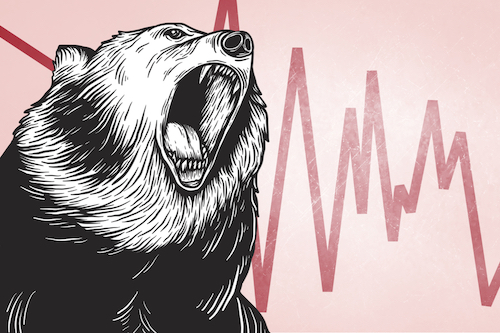- Stock market bears insist that the recent rally off the coronavirus crash makes no sense.
- As Alexander Green explains today, most of them lack imagination or simply don’t understand how markets work – or both.
The majority of Americans have either never owned stocks or sold them in a panic during the last financial crisis.
They missed out entirely on the longest-running bull market in history, the one that began in March 2009 and ended in February of this year.
(The S&P 500 rose over 400% during the period. Our favorite stocks did considerably better.)
Millions more Americans have missed out on the latest bull market, as the last bear market bottomed on March 23.
(A bear market, of course, is defined as a drop of 20% or more from the top. A bull market is defined as a rise of 20% or more off the bottom.)
Bears insist that the market’s 32% rally makes no sense to them.
Most lack imagination or don’t understand how markets work – or both.
Let’s start with the first…
Historians tell us that many people fall prey to presentism.
That’s the practice of judging the past by the standards of the present.
It’s a combination of ignorance and arrogance that allows some folks to flatter themselves that they are actually more virtuous than, say, George Washington, since they never owned slaves.
These folks never stop to imagine that future generations will look back at us with their own condescending moral views.
I already have vegan and vegetarian friends, for instance, who insist that all animals are sentient creatures that suffer and feel pain, so eating factory-farmed meat is deeply immoral.
They encourage skeptics to imagine their own pets living in an overcrowded cage, in unsanitary conditions, unable to move, and with illnesses and injuries unnoticed and untreated.
Some of us can imagine these things. Others simply can’t. Or won’t.
By the same token, some of us have no problem visualizing what life will be like two years from now. Others are entirely stuck in the present.
The coronavirus will still be with us, of course. But we will have a successful treatment, a vaccine and much greater herd immunity.
We will fly, cruise, stay in hotels, eat in restaurants and shop in malls. We will attend concerts, sporting events, business conferences and Broadway plays.
Life may not be completely normal again. But it will be pretty close.
That’s not to suggest that there isn’t more pain and suffering ahead.
The virus is still spreading. The death toll and jobless claims are still climbing. The economy is still contracting. And most businesses are still closed.
So why have stocks already skyrocketed?
Because investors are looking ahead to when people are congregating again, customers are spending again and businesses are thriving again.
Those who insist that it is too soon for investors to price in better circumstances simply don’t understand how markets work.
Markets bottom when the outlook is terrible, as it was two months ago.
They rally – and continue to rise – as the light at the end of the tunnel begins to look like a beacon.
The last bear market bottomed in March 2009, for example, even though the recession didn’t end until the third quarter of that year.
In the decade that followed, there was no shortage of problems, setbacks and sluggish growth.
(Or have you forgotten that President Barack Obama presided over the weakest economic recovery since World War II?)
Investors who insisted 11 years ago that the stock market had gotten ahead of itself – calling it a “head fake,” a “bear market rally” or a “dead cat bounce” – waited on the sidelines for more than a decade for a major reversal.
(That’s not being “early,” incidentally. That’s being dead wrong.)
I’m not suggesting that we have another decade-long bull market ahead.
In the weeks ahead, circumstances could change for the worse and investors would incorporate a more pessimistic outlook into share prices.
But the two most venerable pieces of stock market wisdom are “don’t fight the Fed” and “don’t fight the tape.”
The central bank has lowered short-term rates to zero. It is providing unlimited market liquidity. And it is making unprecedented asset purchases.
That means bears are not just fighting the Fed but a nuclear-armed one.
We are also officially in a new bull market, one that has already lasted longer than the recent bear market.
Being on the wrong side of a 32% market move in two months is not just fighting the tape. It’s like fighting a rocket launch at Cape Canaveral from 10 feet above the nose cone.
No wonder short sellers have gotten slaughtered in this market.
Don’t get me wrong. No one knows how long the current bull market will last.
But you might not want to run your money based on the opinion of someone on the wrong side of a 30%-plus move in the markets in two months… and who can’t even understand how it happened.
Except, of course, to claim that investors have lost their minds.
That observation – or excuse – always reminds me of that old World War I marching song: “They Were All Out of Step But Jim.”
Good investing,
Alex
